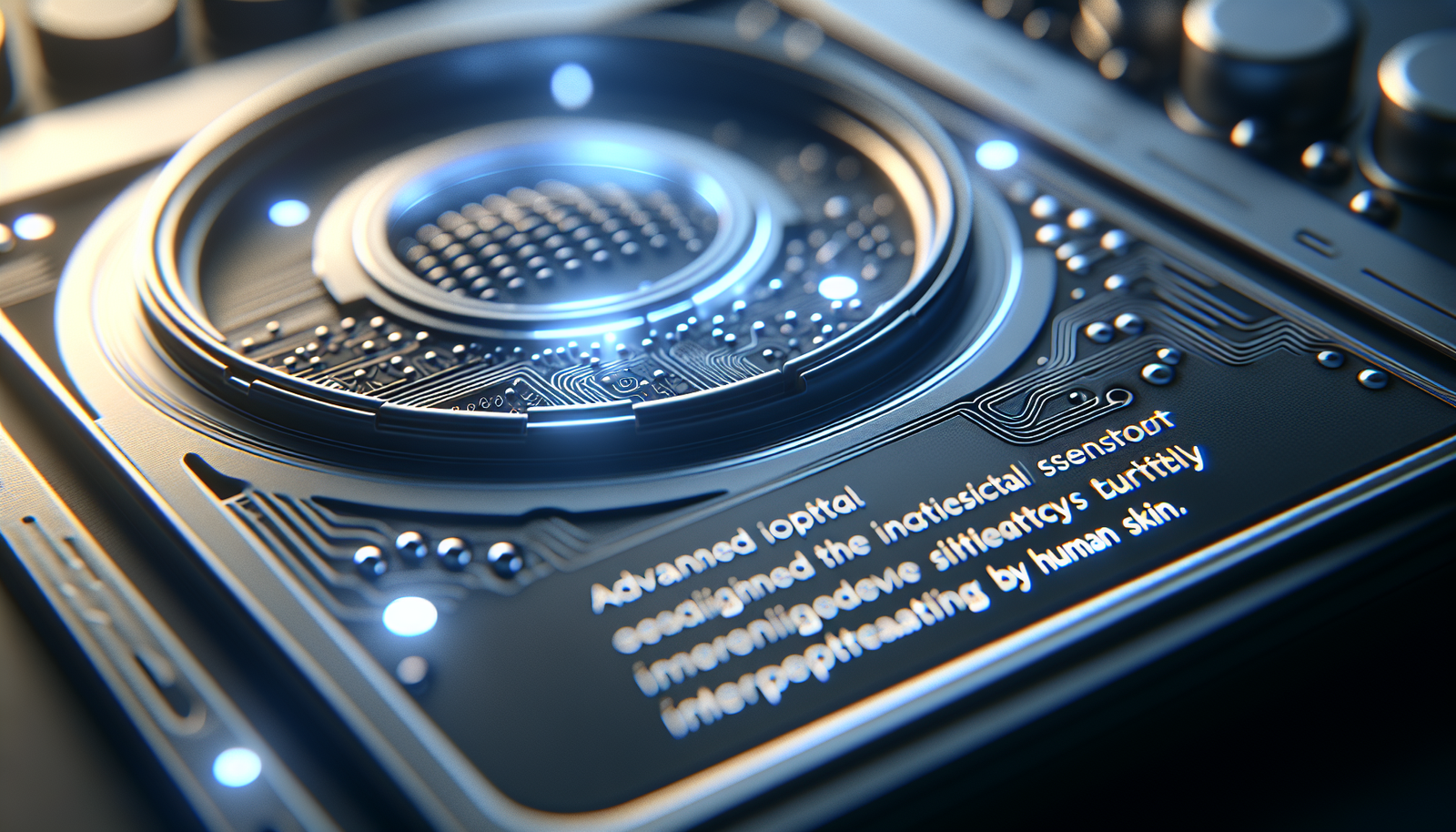Technological innovation transcends the boundaries of accessibility. A new skin-inspired optical sensor gives users the ability to read *Braille* at an unprecedented speed. This advancement, which combines *sophistication* and precision, promises to transform the way visually impaired individuals interact with their environment. The sensor’s ability to detect subtle nuances in texture represents a major advancement for inclusion. The alliance of technology and tactile sensitivity opens up a realm of possibilities to make Braille more accessible to all.
A revolutionary optical sensor
A group of researchers has developed a flexible optical sensor capable of reading Braille with unprecedented speed and accuracy. This innovative device constitutes a significant advancement for the accessibility of information intended for blind individuals. The technology offers a promising solution for creating smart readers that will convert Braille into text or speech.
How the sensor works
The sensor derives its effectiveness from an integrated fiber optic ring resonator within a flexible material called PDMS (polydimethylsiloxane). When pressure is applied, the sensor detects changes in light frequency, converting these variations into readable data. Experiments show that, in combination with data processing methods using neural networks, the system can decipher letters, numbers, and punctuation marks in a flash.
The advantages of the technology
According to the researchers, this device could lead to faster and more precise smart readers that read Braille without requiring prior learning for users. This breakthrough could also promote the dissemination of Braille in public spaces, on digital platforms, and in educational settings. It could also benefit other fields requiring sensitive tactile detection, such as smart medical devices or next-generation robotics.
A sensor inspired by human skin
The development of this sensor is inspired by the functioning of human skin, which contains various tactile sensors that transmit information to the brain. During the design phase, researchers aimed to integrate the flexibility and sensitivity of skin with modern and efficient technology. Thus, the fiber optic ring, drawing from bodily mechanics, detects minute pressure differences.
Precision and speed
Tests have shown that this sensor can identify up to eight different Braille patterns with an accuracy of 98.57%. When subjected to a movement simulating real-time reading, the sensor responds in less than 0.1 seconds, allowing for the recognition of an entire word, even with slight variations in each character.
Advanced processing techniques
The technology employed relies on a Pound-Drever-Hall (PDH) type frequency locking. This method ensures the stability of the light signal even in dynamic environments, reducing interference. Multilayer neural networks are used to enhance the device’s accuracy, facilitating the recognition of specific Braille patterns.
Toward increased robustness
Work is underway to improve the durability of the sensor in real-world conditions. The research team is dedicated to optimizing the device for various applications while reducing costs. The integration of machine learning models continues to evolve to handle more complex Braille reading tasks.
Potential impact on accessibility
This optical sensor could transform the accessibility landscape for visually impaired people. The possibility of instant Braille reading comes with the prospect of broader access to information through various practical applications. This development illustrates the capacity of technological innovation to promote inclusion in society.
To learn more about similar advancements, check out the following articles: Innovative optical tactile sensors, A new reservoir computing device, Improving the vision of robots.
Frequently asked questions
What is a skin-inspired optical sensor?
It is a flexible device that uses advanced technology to read Braille, mimicking the characteristics of tactile receptors found in human skin.
How does the sensor read Braille at the speed of touch?
The sensor measures variations in light frequency when pressure is applied, allowing for instant reading of Braille characters when a user runs their finger over them.
What are the benefits of this technology for blind or visually impaired individuals?
This technology makes Braille more accessible and facilitates conversion to text or speech, thus opening new perspectives for access to information for those with visual disabilities.
What types of data can the sensor recognize?
The sensor can identify letters, numbers, and punctuation marks in Braille with great accuracy, even in dynamic environments.
Does the sensor require prior training to be used?
No, using the sensor does not require the user to learn Braille, as the system automatically converts information into text or speech.
How is this sensor different from previous Braille reading technologies?
Unlike older technologies, this sensor offers improved accuracy due to its ability to detect very fine pressure differences, and it operates effectively even in variable conditions.
What challenges have researchers faced in developing the sensor?
The main challenges included creating a sensor sensitive enough to discern the small dots of Braille, and the need to make the system robust against environmental variations.
What is the future for applications of this technology beyond reading Braille?
This technology has the potential to be used in various sectors, such as smart medical devices, where precise tactile detection is crucial, as well as in the development of next-generation robots.






